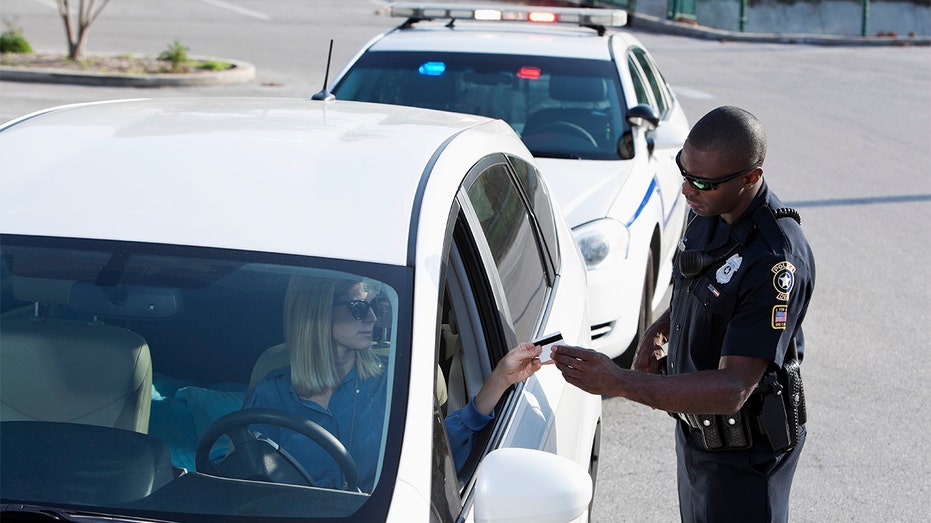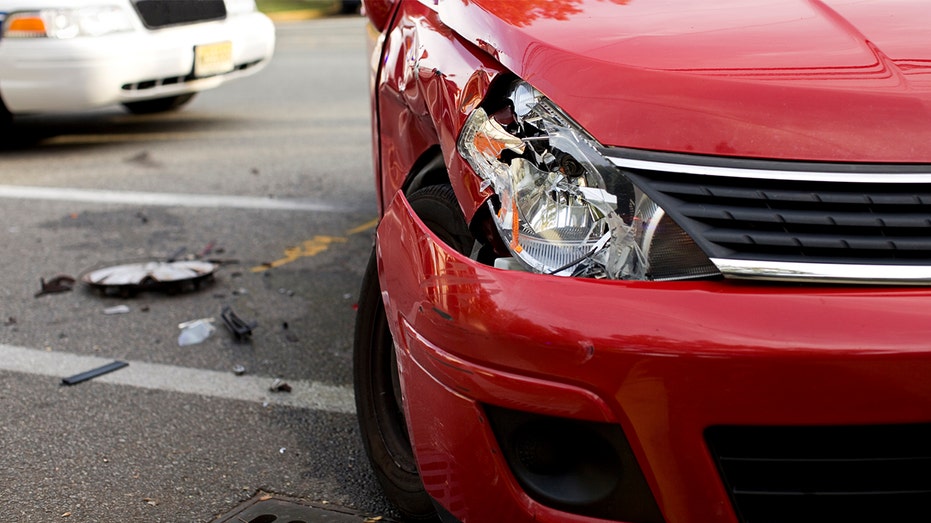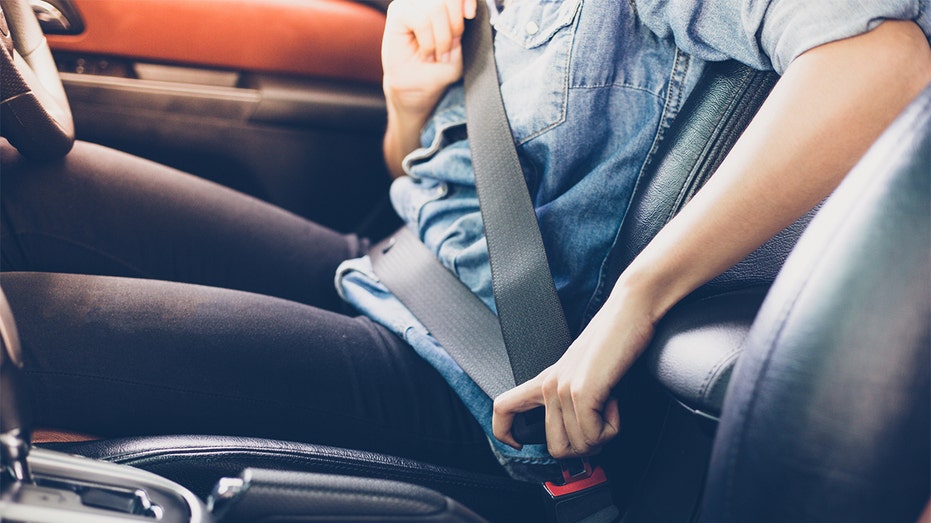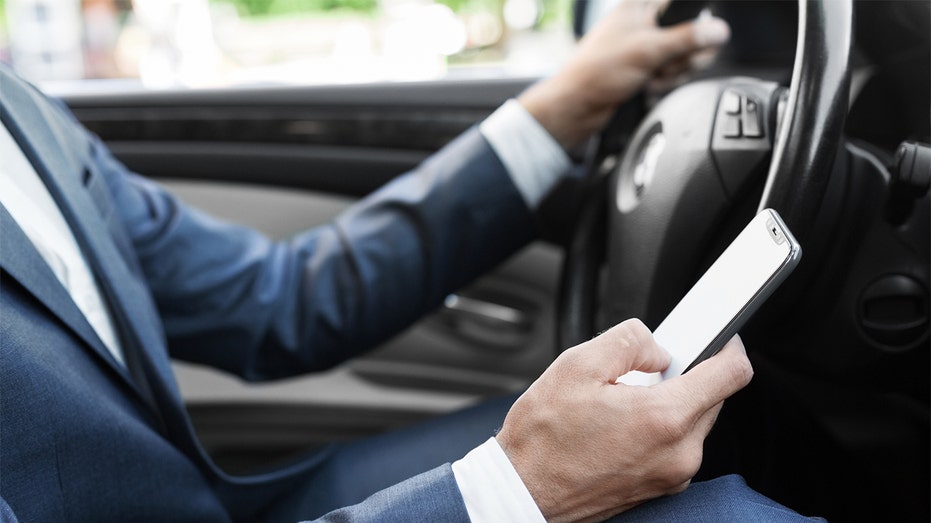Here's why drivers get pulled over by law enforcement: Report
If you’ve ever been pulled over by a police officer while you’re driving, it’s likely for speeding, according to a new report.
AutoInsuranceEZ.com found that speeding is the top reason law enforcement pulls over drivers, making up 40.9 percent of all traffic stops.
Vehicle defects (making up 12.2 percent) came in second place, followed by record checks (9.8 percent), stop sign or traffic light violations (7.3 percent) and illegal turn or lane changes (6.8 percent) in third, fourth and fifth places.
Overall, the website reported that there are approximately 19 million traffic stops per year, with police offering reasons for 95.4 percent of those stops.

According to a new report from AutoInsuranceEZ.com, speeding is the number one reason for traffic stops by law enforcement. A stock image of a police officer pulling over a driver is pictured. (iStock)
For its findings, AutoInsuranceEZ.com used data from the U.S. Bureau of Justice Statistics' Police-Public Contact Survey to find the top 10 reasons for traffic stops as well as the most likely outcomes of each of those reasons.
To see the report’s full results, here are the top 10 reasons drivers are getting pulled over, according to AutoInsuranceEZ.com:
1. Speeding
About 40.9 percent of traffic stops are because of speeding, according to the report. The most likely outcome of a stop for speeding is a ticket, which happens about 66 percent of the time.
2. Vehicle defect

Vehicle defects, such as broken headlights are the second-most common reason for traffic stops, according to AutoInsuranceEZ.com. (iStock)
Police pull over drivers for vehicle defects approximately 12.2 percent of the time, with the most likely outcome being a warning. Officers give out warnings about 63.3 percent of the time during traffic stops for vehicle defects.
3. Record check
Record checks make up 9.8 percent of traffic stops, according to AutoInsuranceEZ.com. The most likely outcome of a record check stop is a warning, which happens 35.4 percent of the time.
4. Stop sign or light violation

Stop sign or traffic light violations make up about 7.3 percent of all traffic stops. (iStock)
About 7.3 percent of traffic stops are due to stop sign or light violations. Police officers usually hand out tickets for these kinds of stops, about 52.3 percent of the time, according to the report.
5. Illegal turn or lane change
Law enforcement officers stop drivers for illegal turns or lane changes about 6.8 percent of the time are most likely to give a warning for the violations, according to the report. Warnings are given about 45.5 percent of the time.
6. Multiple reasons
Drivers are stopped by police for multiple violations about 5.8 percent of the time. In those instances, officers are most likely to hand out tickets, about 45.4 percent of the time.
7. Seat belt violation

Seat belt violations are the seventh-most likely reason for a driver to be pulled over by a police officer. Almost 70 percent of the time, those drivers are ticketed. (iStock)
About 3.2 percent of the time, drivers are stopped for seat belt violations, with 69.9 percent of those stops ending in a ticket, according to AutoInsuranceEZ.com.
8. No reason/police didn’t give a reason
Law enforcement officers give no reason for traffic stops approximately 2.1 percent of the time. The most likely outcome of those stops is that police take no action (35.4 percent).
9. Cell phone violation

Cell phone violations make up only 1.7 percent of traffic stops, according to AutoInsuranceEZ.com. (iStock)
Only about 1.7 percent of traffic stops are because of cell phone violations, according to the report. Of those stops, the most likely outcome is a ticket, which happens 73.6 percent of the time.
CLICK HERE TO READ MORE ON FOX BUSINESS
10. Roadside sobriety check

Law enforcement pull drivers over for roadside sobriety checks only about 1.4 percent of the time, and about 72.1 percent of those stops end with the officer taking no action.
Of the top 10 reasons to be stopped, the least likely reason is a roadside sobriety check, which happens about 1.4 percent. In those cases, law enforcement is most likely to take no action (72.1 percent).




















